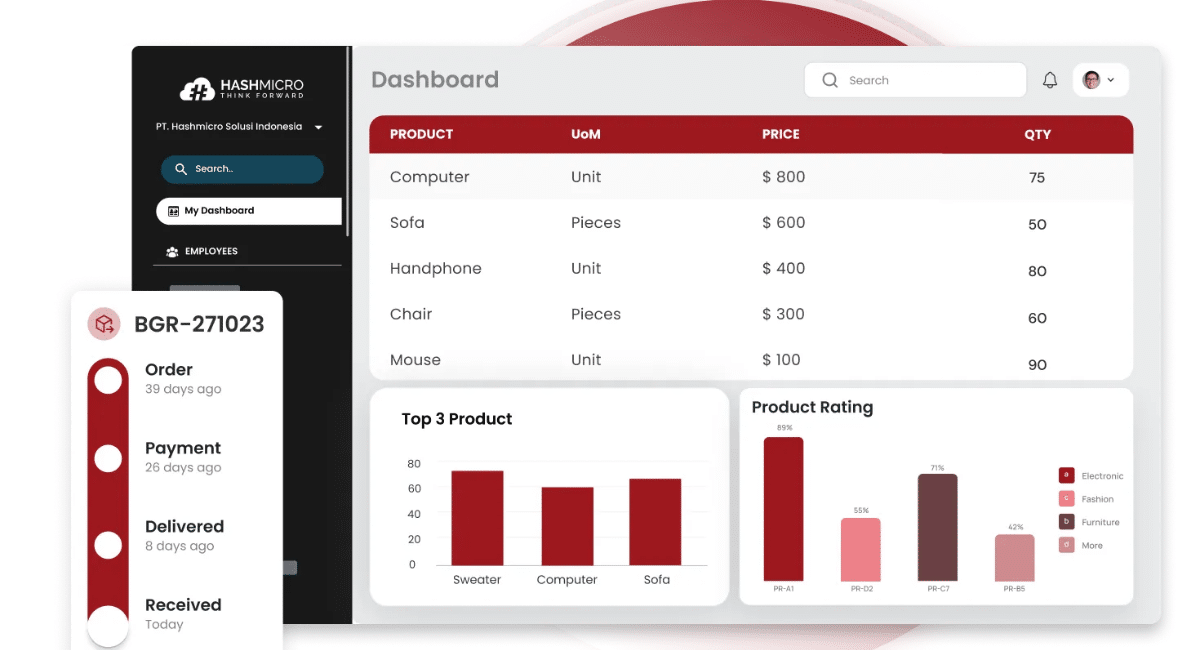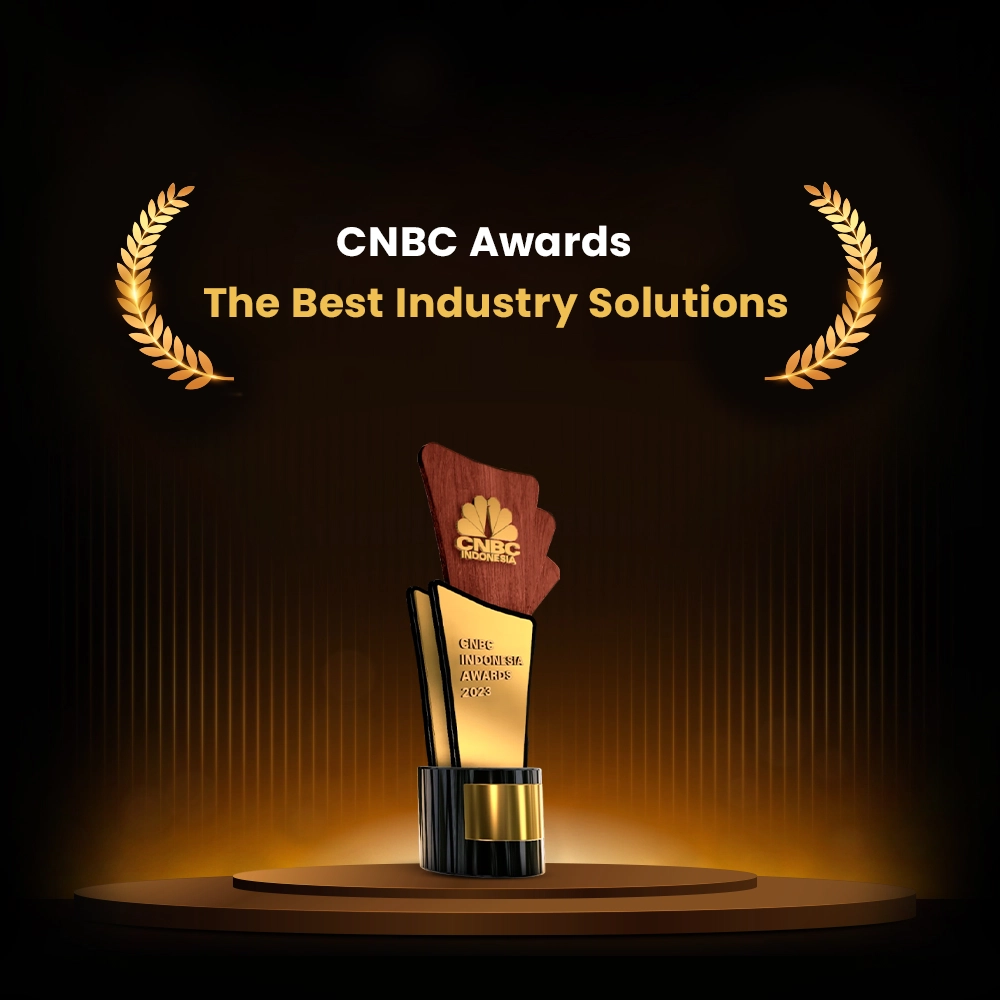Did you know that implementing a procurement system can transform your business and unlock a multitude of benefits? From cost savings to operational efficiency, a well-implemented procurement system can be a game-changer for Philippine businesses.
Basically, a procurement system acts to manage the entire procurement process from identification of needs, selection of suppliers, price negotiation, procurement of goods, to payment processing. the use of a procurement system that suits the needs of the business, supports efficiency in the process of business operations to an increase in profits.
The business resurgence in the Philippines is significantly supported by IT software and services, with the software and services market projected to reach $95 million by 2025. Many businesses are beginning to utilize software with cloud computing to streamline operations, reach a wider audience, and enable businesses to stay competitive.
Therefore, considering the use of procurement software in your business can be a good investment for the future of the company. The benefits in this article are just some of the main reasons to consider an integrated procurement system. Let’s explore the top 10 benefits that a procurement system can bring to your business in more detail.
Table of Content
Content Lists
Common Challenges of Implementing Procurement Systems

Implementing a procurement system can pose various difficulties, as it introduces various challenges that must be overcome. Here are some of the challenges you might experience when implementing a procurement system:
- Balancing cost and quality: Businesses often struggle to strike a balance between cost and quality. In many cases, companies compromise on the quality of products to save costs.
- Unclear specifications & requirements: Providing unclear specifications and requirements during procurement processes can lead to misunderstandings and inefficiencies.
- Lack of standardized procedures: The absence of standardized procedures and guidelines for procurement can lead to inconsistencies and errors.
- Poor vendor selection and management: Ineffective vendor selection and management can lead to supply chain disruptions and quality issues.
- Manual and outdated systems: Relying on manual and outdated purchase order management systems can lead to inefficiencies and errors.
- Procurement bypass: This happens when employees make purchases outside of the procurement process, leading to a lack of visibility and control.
- Difficulty tracking contracts: Without a centralized system, tracking contracts and ensuring compliance can be challenging.
These challenges highlight the importance of implementing a robust and efficient procurement system. It’s crucial to address these issues to ensure a smooth and effective procurement process.
Benefits of Implementing a Procurement System

Implementing procurement software offers many benefits to Philippine businesses, revolutionizing the purchasing process, supplier selection, price negotiation, and integrated financial processes. Below are the top 10 benefits of procurement software for businesses.
1. Reduce the risk of procurement cost overruns
A procurement system helps companies control procurement costs by referring to the efficient management and monitoring of expenses associated with acquiring goods and services within a business. This is facilitated by implementing budgeting and allocating cost centers for each department or project.
By having designated budgets and cost centers, businesses can effectively track and control their procurement spending, ensuring that expenditures remain within predefined limits and are allocated appropriately to specific areas of operation or projects. This proactive approach helps optimize resource utilization, minimize unnecessary expenses, and maintain financial discipline, ultimately contributing to improved overall financial performance and profitability.
2. Preventing late payments
Ensuring on-time payments is one of the main benefits of procurement and is crucial for maintaining positive relationships with suppliers and optimizing procurement processes within a business. By leveraging automated notification systems, businesses can efficiently track and manage unpaid invoices. These notifications serve as reminders, alerting relevant stakeholders to pending payments and impending deadlines.
Furthermore, the ability to track payment statuses facilitates better cash flow management and financial planning, ensuring that funds are allocated effectively and operations remain uninterrupted. Overall, the implementation of automated notification systems for on-time payments contributes to smoother procurement operations, strengthened supplier relationships, and improved financial stability within the organization.
3. Supplier management
Implementing an integrated procurement system offers companies a multifaceted approach to mitigating supplier risks. Beyond facilitating a streamlined tender process to secure optimal deals, the system empowers businesses to consistently assess and monitor supplier performance.
Through regular evaluations, companies can proactively identify and address potential issues such as late deliveries, subpar product quality, or deviations from contract terms, thereby minimizing the risks associated with supplier relationships. This comprehensive risk management strategy not only enhances operational efficiency but also fosters stronger and more reliable partnerships with suppliers, ultimately contributing to the overall resilience and sustainability of the supply chain.
4. Optimized Source-to-Pay (S2P) and Source-to-Contract (S2C)
The Source-to-Pay (S2P) process expands upon the Procure-to-Pay (P2P) process by incorporating additional steps aimed at securing sources for expenditure through requests for quotations (RFQs) or requests for proposals (RFPs), rather than solely relying on selecting the best available vendor. Furthermore, S2C (Source-to-Contract) encompasses the establishment of a formal contractual relationship with the selected supplier. The implementation of effective procurement software significantly streamlines both of these processes by providing comprehensive contract management tools that span all stages of the contract lifecycle.
This software enables businesses to seamlessly generate purchase requests and convert them into purchase orders, as well as effortlessly send requests for quotations to suppliers, all within a few clicks through the procurement system. By simplifying these essential procurement tasks, the software enhances efficiency, reduces manual errors, and facilitates smoother collaboration between stakeholders, ultimately driving overall procurement effectiveness and ensuring better supplier relationships.
5. Easy backorder management
Easy backorder management is one of the benefits of procurement which simplifies the process of handling situations where ordered goods exceed available inventory. With this system, businesses have the flexibility to adjust item delivery and payment terms with vendors based on the actual receipt of goods. This means that when certain items are not immediately available, businesses can postpone delivery schedules and adjust payment accordingly until the goods are received.
By offering this level of flexibility, easy backorder management enables businesses to efficiently manage inventory levels, prevent stockouts, optimize cash flow, and maintain positive relationships with vendors. Overall, it streamlines supply chain operations, enhances operational efficiency, and ensures smoother procurement processes, ultimately benefiting both the business and its stakeholders.
6. Full traceability
Full traceability provides businesses with comprehensive visibility into the entire journey of products, from their arrival at the warehouse to their shipment and receipt. With this system in place, businesses can accurately track the movement of products, ensuring transparency and accountability at every stage of the supply chain. By receiving notifications when orders are shipped and subsequently received, businesses can stay informed in real-time about the status of their inventory.
This level of visibility not only enables businesses to efficiently manage their inventory levels but also helps in identifying any potential delays or discrepancies in shipments. Additionally, full traceability enhances quality control measures by allowing businesses to monitor product conditions throughout the supply chain, ensuring that only high-quality goods are delivered to customers. Overall, full traceability streamlines logistics operations, improves inventory management, and enhances customer satisfaction by providing timely and accurate information about product availability and delivery.
7. Optimized approval processes
With this system, you can easily automate the approval process. By automating these workflows, the system reduces the time it takes to process requests, eliminates delays, and ensures that all purchases comply with internal policies and regulations. With just one system, businesses can approve or reject purchase requests from any department, location, or employee. This streamlined process minimizes the risk of unauthorized purchases, ensuring that only necessary and appropriate transactions are approved.
8. Increased resource availability
Utilizing a procurement system allows companies to improve resource management efficiency, guaranteeing the availability of materials and services essential for operational continuity. This includes various aspects, such as optimizing inventory management practices to maintain adequate stock levels, ensuring timely access to needed supplies.
Moreover, companies can leverage the procurement system to negotiate and formalize favorable contracts with suppliers, thus securing favorable terms and conditions that are aligned with their operational needs and financial goals. Through these capabilities, companies can streamline their sourcing processes, improve operational resilience, and drive sustainable growth.
9. Improved spend analysis
With this procurement system, your company can perform more efficient spend analysis. The system allows you to view spend trends and determine potential cost-saving opportunities. This enhanced analytical capability equips companies with valuable insights for informed decision-making in budget management, allowing them to allocate resources more strategically and effectively.
By identifying areas where costs can be minimized or optimized, companies can maximize spending efficiency, ensuring that resources are allocated wisely and aligned with company goals. Ultimately, the ability to analyze spending trends and identify cost-saving opportunities will improve the financial agility and sustainability of businesses, allowing them to navigate market dynamics and achieve long-term success.
10. Improved procedural transparency & efficiency
Other advantages of procurement are increasing transparency and procedural efficiency by providing better visibility on each step in the procurement cycle. By utilizing these systems, companies gain access to up-to-date information on critical metrics such as inventory levels, supplier performance, and pricing trends. This real-time data empowers businesses to make the right decisions quickly, optimize inventory management, identify cost-saving opportunities through supplier evaluation, and stay ahead of market fluctuations by monitoring price trends.
In addition, real-time monitoring facilitates proactive adjustments to procurement strategies, thus enabling companies to adapt quickly to changing market conditions and maintain a competitive edge. Overall, the ability to access real-time data through procurement systems improves operational agility, efficiency, and strategic decision-making capabilities.
Streamline Your Purchase Management with HashMicro Procurement Software

When it comes to choosing a procurement system for your Philippine business, careful consideration is crucial. The right procurement system can have a significant impact on your operations, helping you streamline processes, optimize costs, and drive efficiency.
Here are some key factors to keep in mind when selecting a procurement system:
- Determine your business objectives
- Consider integration capabilities
- Evaluate usability and training requirements
- Examine regulatory compliance and security features
- Select the best vendor for your company
By considering these key factors, you can make the right decision when choosing a procurement system that suits your company’s needs and goals. You can also consider HashMicro Procurement Software as one of the best options.
HashMicro is a leading company known for its system standards and commitment to delivering high-quality solutions. HashMicro has been trusted by various companies in South East Asia for its software solutions especially in its Procurement Management System, which is designed to optimize and automate the procurement process for companies of all sizes. This is a proof of its reliability and effectiveness in fulfilling various business needs.
The software covers end-to-end business processes and provides comprehensive functionality for full traceability, invoicing, procurement spend management, easy backorder management and timely payment control. Below are some of the comprehensive features that HashMicro offers:
- PO, RFQ & PR management: These features streamline the procurement process by enabling users to swiftly create purchase requests and convert them into orders just in one platform. This saves time, improves accuracy, and strengthens supplier relationships effectively.
- PR approval management: This feature can speed up the approval or rejection of purchase requests from different business locations, departments, or employees with ease. With a single click, users can speed up the approval process, eliminating the need for complicated manual procedures.
- Supplier rating and management: You can perform various actions that improve your vendor management and valuation. From vendor product catalogs, quick and efficient tendering processes, and measuring vendor performance based on various parameters such as product quality, service, delivery time, price, and more.
- Blanket order management: With this feature, you can order goods according to the price and time agreed with the supplier. Companies can also enter into long-term purchase agreements with suppliers for a certain number of items at a pre-set price and timeframe.
- Landed cost calculation: This feature allows users to quickly and accurately find out the total cost of a product purchase by automating the calculation of various cost components such as taxes, shipping costs, insurance, and other costs that may arise during the delivery process. In addition, it can also calculate currency conversion costs if the transaction involves overseas purchases.
In addition, HashMicro’s procurement management software is designed with integration capabilities that enable seamless integration with other modules such as, purchasing, inventory management, and CRM-sales.
With its comprehensive features and high adaptability, HashMicro helps companies increase productivity and competitiveness in dynamic markets through effective and accurate enterprise procurement management.
Conclusion
Implementing a procurement system can revolutionize your Philippine businesses by delivering a wide range of benefits. By adopting a robust procurement system, you can strategically reduce costs, increase the availability of essential resources, and enhance procedural transparency and efficiency. Furthermore, mitigating supplier risks and controlling procurement cost become achievable goals, allowing for a more resilient and agile supply chain.
Choosing the right procurement system is crucial to unlock these advantages. Consider factors such as functionality, scalability, and integration capabilities to ensure seamless implementation and alignment with your business needs. By making an informed decision, you can harness the full potential of procurement and accelerate your organization’s growth and success.
HashMicro is one of the Procurement Software providers that offers complete customisable features according to your business needs. This software allows your company to streamline the procurement process, gain actionable insights, and drive business growth to stay ahead of competitors.
Schedule a free demo today to explore how HashMicro’s software solutions can transform your procurement management process.

















